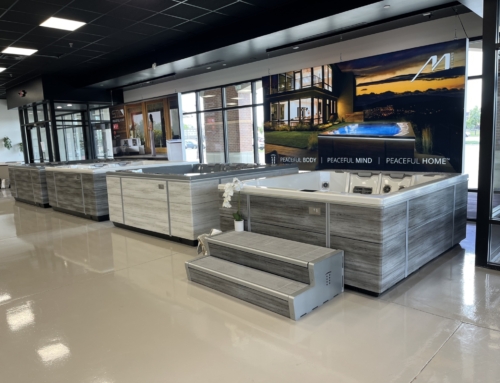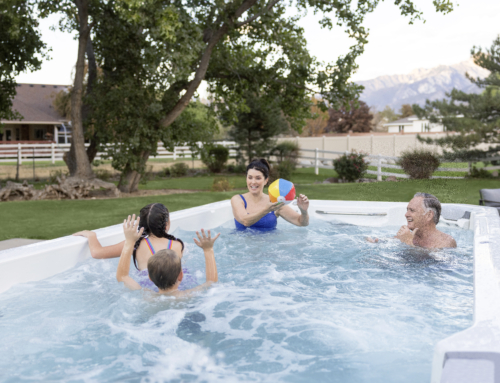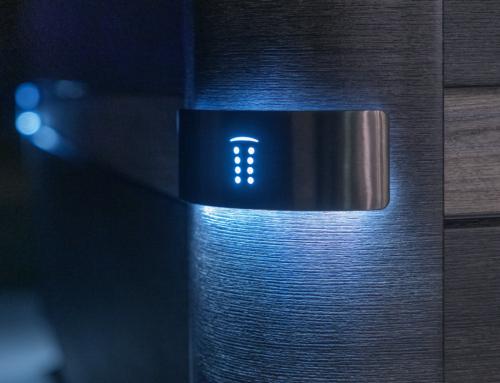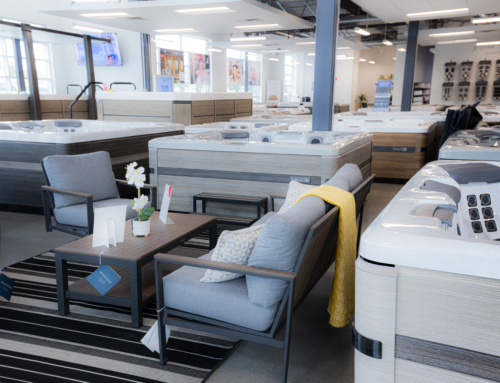With the end of the year approaching, retailers are taking stock and thinking about the future. In 2017, for the most part, the spa industry has recovered from the recession, but where are the trends leading?
There are several factors to account for. Digital marketplaces are booming; the threat of big box retail continues to loom; manufacturers are consolidating. Despite the odds, retailers who survived the recession are seeing growth in 2017. Nevertheless, the hot tub retail climate is going to face a radical transformation in the coming decade. If retailers don’t anticipate and adapt, they could be out of business.
Sales Are Improving, But…
As the consumer economy continues to grow, hot tub sales have risen. This is good news. In fact, in a recent market research report, studies predict the global hot tub industry will grow at a compounded annual growth rate (CAGR) of 4.9% between 2017-2021–modest, but steady.
At the regional level, sales are generally up as well, but inconsistently. According to Aqua Magazine’s 2017 SOI report, among the 500 dealers surveyed, 67% saw an increase in sales this year, up 8% from the previous year. Again, these are generally positive results, but also indicative of a change in consumer spending habits and stronger economy. While many retailers saw higher profits in recent years, others stagnated.
What does this mean? Sales are not the only metric to gauge the future of the spa retail. To get the full picture, retailers need to account for changes in manufacturing and consumer spending, namely where and how consumers shop. For many, the future of the spa industry depends on how well their businesses can adapt.
Fewer (But Bigger) Manufacturers
One of the most drastic changes in the industry is the increase in manufacturer consolidation. Since the recession, hot tub manufacturing has seen a wave of acquisitions as larger companies absorb small scale producers. The timing is no coincidence.
Doug Larson, president of Cover Products, a subsidiary of Latham Pool Products, speaking with the APSP Quarterly, explains, “One reason I see more consolidation coming is that we are now in a rebounding market, and in that kind of situation more existing players are willing and able to finance acquisitions.” Manufacturers are adapting to the economic climate. After-sales dropped by nearly 80% during the recession, the only way to grow in the aftermath was to consolidate.
If the merger trend continues over the next decade, the spa industry will likely benefit from better R&D and increased brand awareness.
For retailers, manufacturer consolidation has a generally positive effect. Though they may incur price increases and less brand diversity, they also receive better products and service. Jeff Fausett, Chairman of the Board at APSP, argues, “Big companies can put more money into technology research and product engineering. The consumer will be better off because pool and spa products become more efficient and have greater reliability.”
If the merger trend continues over the next decade, the spa industry will likely benefit from better R&D and increased brand awareness. For retailers, this hopefully translates to improved hot tubs sales.
Competing With the Big Box Marketplace
The emergence of big-box retail and digital marketplaces like Amazon and Wayfair have had a mixed effect on retailers. Nearly every spa dealer will attest to having lost business to these goliaths. However, they also admit that the fallout is not as bad as it could be.
As of 2017, the major online retailers and big box chains have not invested heavily in the spa sector. They’ve focused their efforts on cornering the low-end market, selling inexpensive consumer models, leaving much of the sector untouched. Over the next decade, that could change.
Bullfrog Spas’ Senior Marketing Manager Jake Ricks explains, “Some of the biggest challenges will come from increased competitive pressure from mass channels like big box and e-commerce, including big digital marketplaces like Amazon, Wayfair, and Alibaba.” As these markets shift their focus toward high-end spa distribution, competition will become stiffer for small retailers.
At the end of the day, the retailer that knows its products, its customers, and its business has an advantage over the monoliths–a meaningful and lasting relationship with their consumers.
These mass-market channels have the resources and potential to invest heavily in better products and customer service, lowering prices across the industry. Ricks warns, “As the market matures, these competitors will eventually turn their attention towards the spa segment. Once larger outlets are paying attention, international product manufacturing will improve, and it won’t take long for these competitors to get their hands on top quality product.”
The challenge for independent spa dealers over the coming years will be to offer an experience unique to brick-and-mortar retail, such as convenience, customer service, and reliability.
E-Commerce in Small Retail
Ecommerce has surpassed the point of “emerging.” Whether brick-and-mortar retailers admit or not, the digital marketplace is here to stay and is expanding. Some independent dealers have already begun adapting to the shift, integrating an ecommerce platforms into their business.
Recently, Mark Nelson, President of Master Spas of Western Michigan, invested in an e-commerce platform for his business. His reasoning: accessibility. “People will come from an hour, hour-and-a-half to my store,” he explains. “With the internet, they’ll come from other countries to my store. With e-commerce, we can be a worldwide company even though we’re not a worldwide-size company.”
With e-commerce, we can be a worldwide company even though we're not a worldwide-size company. ~ Mark Nelson, President of Master Spas of Western Michigan
Dealers like Nelson have realized that in order to compete with the big online retailers, you need to think like them without trying to be them. Jeff Bailey of Spring Dance Hot Tubs knows the limits of his online business. “We’re not online to be the deep-discount seller,” Bailey says. “We’re very specific. We sell what we sell in the store.”
Most small dealers still move their big-ticket items in-store. However, online sales of accessories and chemicals have proven to be profitable, not to mention convenient for consumers. To stay afloat in an increasingly e-commerce market, more independent retailers need to invest in a modest e-commerce platform. No matter which way you look at it, the digital marketplace is here to stay.
A New Generation of Consumers
The growing young consumer base is a promising sign for spa retail. Having come of age in the ecommerce era, millennials seem to prefer the traditional brick-and-mortar shopping experience. They are opting to shop at local dealers, trading bargains for service.
Ricks explains that millennial consumers are looking for small business values, such as experience and sustainability. “Local ties, expertise, and dedication to the spa category will increasingly be perceived as a strength with this generation of shoppers.” This is an encouraging trend, one that will likely keep the small, service-oriented dealers afloat.
Focus on Product and Customer Service
The shift in millennial consumer habits does not mean small hot tub retailers can simply hold the course. Instead, they must double-down on their commitment to customer service and product expertise to outlast the big box and ecommerce giants.
Nevertheless, there’s hope. Ricks states, “Luckily, the dedicated local spa dealers will largely be insulated from [the e-commerce trend] and even helped to some degree. Those that don’t pay attention to the kind of experience they provide won’t be able to last long term.” At the end of the day, the retailer that knows its products, its customers, and its business has an advantage over the monoliths–a meaningful and lasting relationship with their consumers.
It’s true–the next 10 years pose formidable challenges for spa retailers, but there are many bright spots as well. However, these shifts have been a known threat for years, affecting small businesses in nearly every sector. Now is the time to learn and adapt. For those who do, the next decade promises to be rewarding.








Leave A Comment